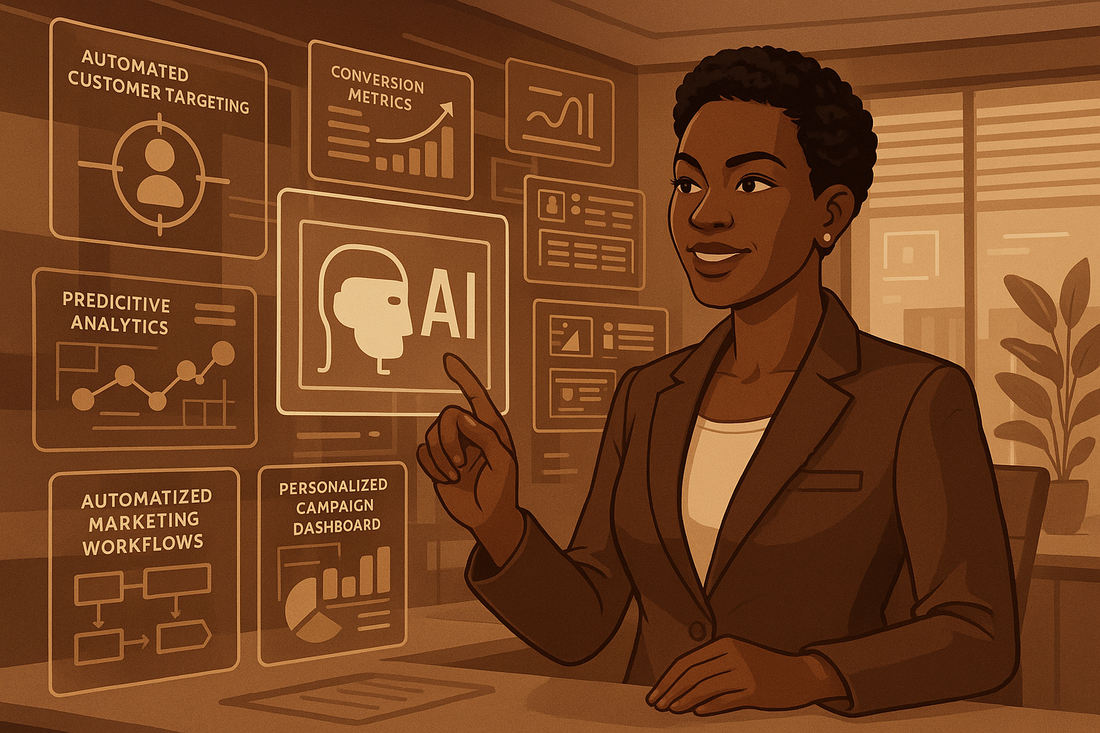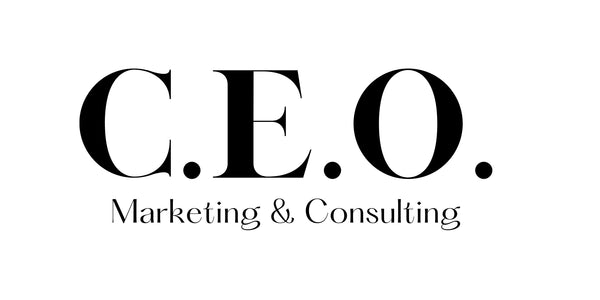
How CEOs Can Leverage AI in Marketing: A 2025 Guide for Growth-Focused Leaders
Share
In 2025, the competitive edge for most businesses is no longer just about having a good product or service, it’s about how intelligently you market it. Artificial intelligence (AI) has moved from being a futuristic concept to a must-have tool for staying relevant, competitive, and profitable.
For CEOs, this shift is significant. AI is not just a “marketing department tool”, it’s a strategic lever for growth. When implemented correctly, AI can help you scale marketing efforts, make better decisions, and build stronger connections with your target audience, all while maximizing ROI.
In this post, we’ll explore what AI in marketing really means, why CEOs should champion it, and practical ways to integrate AI into your company’s marketing strategy.
1. Why CEOs Need to Care About AI in Marketing
AI has gone beyond chatbots and predictive text. It now powers entire ecosystems, from real-time customer segmentation to ad targeting and personalized content.
Here’s why it matters at the executive level:
-
Faster, Data-Driven Decisions: AI can analyze customer behavior and market trends faster than any team could manually.
-
Better ROI: Smarter targeting means lower ad spend waste and higher conversions.
-
Scalability: AI lets your marketing team do more with fewer resources, critical for lean operations.
-
Competitive Advantage: Companies leveraging AI are often first to capture market share and stay ahead of competitors.
A CEO who understands and champions AI in marketing sets the tone for a culture of innovation.
2. Key AI Marketing Use Cases CEOs Should Know
A. Customer Insights & Segmentation
AI can cluster your audience into hyper-specific segments based on behavior, purchase history, and engagement patterns.
Example: Instead of one generic campaign, your team can send different messages to first-time visitors, repeat buyers, and high-value customers, increasing relevance and conversion rates.
B. Predictive Analytics for Smarter Decisions
Predictive models can forecast trends, sales, and customer churn before they happen.
Example: If AI detects that a certain segment is likely to unsubscribe, you can launch a re-engagement campaign proactively.
C. Content Personalization & Recommendations
AI helps deliver the right message, at the right time, to the right person.
Example: Netflix uses AI to recommend shows, you can use similar tech to recommend blogs, products, or services to prospects based on their journey.
D. AI-Powered Copywriting & Creative Assistance
Generative AI tools can create email subject lines, ad copy, and even full blog posts.
CEO Tip: Your team should use these tools as a starting point, with human oversight to maintain voice and compliance.
E. Paid Media Optimization
AI platforms like Google Ads Smart Bidding automatically adjust bids in real time to get you the best results within budget.
F. Chatbots & Conversational AI
AI chatbots now handle customer service, lead qualification, and appointment booking, freeing your team to focus on high-value tasks.
3. How to Integrate AI into Your Marketing Strategy
Here’s a roadmap CEOs can champion:
-
Audit Your Current Marketing Process: Identify bottlenecks, data gaps, and tasks that could be automated.
-
Choose the Right Tools: Start small, select one or two AI platforms (like HubSpot AI, Jasper, or ChatGPT-powered systems) that align with your goals.
-
Empower Your Team: Provide training and set clear expectations. Your team needs to know AI is a tool, not a replacement.
-
Set Measurable KPIs: Track success with data, look at conversion rates, cost per lead, time saved, and revenue growth.
-
Maintain Ethical Guardrails: Implement policies around privacy, bias, and transparency. As CEO, you set the ethical tone.
4. Common CEO Concerns About AI (and How to Address Them)
| Concern | CEO Perspective | Solution |
|---|---|---|
| Cost of AI Tools | “Will this be expensive?” | Many AI tools offer scalable plans, start small and expand as ROI is proven. |
| Data Privacy | “Will this put customer data at risk?” | Work with your IT and legal team to ensure compliance with GDPR/CCPA. |
| Loss of Human Touch | “Will this make our brand feel robotic?” | Use AI to enhance, not replace, human creativity and connection. |
5. CEO Action Plan: First 90 Days
If you want to move quickly, here’s a 90-day action plan:
-
Days 1–30:
-
Conduct a marketing audit.
-
Identify 2–3 areas where AI could have immediate impact.
-
Select pilot tools and get buy-in from your leadership team.
-
-
Days 31–60:
-
Launch pilot projects (AI chatbots, automated email segmentation).
-
Monitor performance metrics weekly.
-
-
Days 61–90:
-
Evaluate ROI, gather feedback from your team.
-
Decide where to scale and which additional tools to adopt.
-
6. Final Thoughts: The CEO’s Role in AI-Driven Marketing
AI is not a “marketing team project.” It’s a company-wide transformation that must start at the top. CEOs who embrace AI early will lead companies that are agile, efficient, and customer-centric, all critical factors for growth in 2025 and beyond.
Call to Action:
If you’re ready to explore how AI can transform your marketing strategy, schedule a consultation with CEO Marketing & Consulting today. We’ll help you identify the right tools, build an integration roadmap, and train your team to get measurable results.
